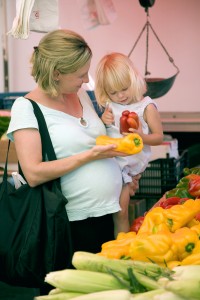 |
| Forbes Magazine science contributor, Emily Willingham |
Here's a thought-provoking article from Forbes' contributing science writer, EmilyWillingham, regarding pesticides and the adverse affects of Autism. Worth the read - and thought.
An
anti-pesticide manifesto [PDF] from the
Pesticide Action Network North America (PANNA) has recently made a
few headlines in
big papers and nabbed a feature on an
NPR
member station with claims that “children today are sicker than they
were a generation ago” and that pesticides are a “key driver” of the
increase in childhood disorders such as “childhood cancers … autism,
birth defects, and asthma.” The
news reports
almost invariably describe the tome in scientific terms without
mentioning that it’s self published and not peer reviewed and contains
no new data or information. The stories do not fail, however, to mention
autism and to mention it early.
The PANNA authors pin their autism claim in part on the much
written-about “autism epidemic.” While environmental factors might play
some role in a small portion of the increase in autism, as I argue
here,
the general consensus appears to be that diagnostic substitution and
enhanced awareness and recognition are the main drivers. Regardless of
whether a genuine increase exists and what environmental factors are key
to it, very
little published evidence suggests a link between autism diagnoses and pesticide exposures. Yet the two keep popping up together in
articles that sensationalize a relationship or posit one from research that
doesn’t address autism at all.
Autism, though, sells. It sells stories, it gets attention, it
attracts clicks. So let’s take a look at what they’re selling you.
The PANNA report mentions autism 58 times but focuses on it only in
one short section of its 40 pages. In this section, called “The
Science,” the authors cite a handful of published reports, not all of
them studies. One paper is a scientific op-ed of sorts that gained fame
for asserting that “10 chemicals”–gotta love numbered lists–need
attention in the context of autism, which sounds great except…hardly any
of them
had been linked to autism in any way.
Against the backdrop of this editorial, the authors of the PANNA report
then go on to list eight other studies they claim support an
autism-pesticide link (I note here that the term “pesticide” is used
loosely to encompass herbicides, fungicides, and insecticides). In four
of eight cases, they simply mischaracterize the studies they cite.
Among the eight studies, an original research study they reference is a
2006 report
assessing links between a pesticide, chlorpyrifos , and developmental
delays (not diagnosed autism) in urban-dwelling families. Chlorpyrifos
was introduced in 1965 and widely used in households until it was
banned in 2001 for home use. It remains in wide use in agriculture. A
second study
the PANNA authors cite was a 2007 article describing prenatal
agricultural exposure to several compounds, including chlorpyrifos.
Those investigators found no link between chlorpyrifos and endpoints
that were similar to those of 2006 study, but did identify an
association between another chemical and pervasive developmental
disorders (again, not diagnosed autism). So far, we’ve got two reports
with conflicting results that don’t involve diagnosed autism.
The PANNA group then lists what they call a “trio of US studies” from
2012 that “examined links between environmental exposures among parents
(including but not limited to pesticides) and the incidence of autism
among their children.” The studies in question didn’t examine those
links at all and don’t mention pesticides or even environment; the
authors of those reports might be surprised to see how their work has
been described. All three are genetics studies. One group described
finding a
greater rate of spontaneous mutations
passed along from fathers compared to mothers and that accumulation of
these mutations was associated with the dad’s age. Another found an
association between an
epilepsy-related gene variant and autism. The third identified
two other gene variants
that are risk factors for autism. These studies weren’t about
pesticides and autism and they did not “examine links” in the way
described. A
fourth study the PANNA authors cite,
also from 2012, was another genetics study that confirmed an
association between father’s age and accumulated mutations and was not a
study of pesticides.
Finally, the PANNA report cites, as its last pillar in its
“pesticides as key drivers of autism” argument, a 2012 paper proposing a
hazy network between autism and a mishmash of high-fructose corn syrup
consumption, mercury, organophosphates, and a host of other chemophobia
bugbears. But that paper was a review and contained no new data. At the
time of its publication, I
analyzed its rationales and conclusions and found that the arguments fell apart from the word go. The authors’ response to that critique and my response to them are
here.
In sum, the section from this PANNA report asserting that pesticides
are a “key driver” of an autism increase contains eight citations of
what they call “The Science.” Two contain no original research, four
aren’t related to pesticide assessment at all but are misleadingly
described as such, and two address intense pesticide exposure and
pervasive developmental disorders and delays but not autism
specifically. The case they build to link autism and pesticides is not a
compelling one. Why did they build it? I’m guessing because autism gets
attention.
They could have built it better, at any rate. They did cite one other
relevant research paper in the report, but for some reason, they failed
to include it in “The Science.” That 2007 study suggested that maternal
residence in the vicinity of pesticide application in the central
valley of California
might be associated with diagnosed autism, although the work had some pretty significant confounders and limitations that its authors note.
Another citation the PANNA authors included outside of “The Science” was a
2012 review
in a peer-reviewed journal, “Tipping the Balance of Autism Risk:
Potential Mechanisms Linking Pesticides and Autism.” This review offers
up a kitchen sink of animal and cell research–ranging from sea urchins
to voles–to weave a plausibility argument associating autism and
pesticides. One report its authors highlight describes, ironically, a
beneficial effect of chlorpyrifos in “restoring behaviors” in a mouse
model (ETA: I don’t know what the specific behaviors were, just that the
chlorpyrifos treatment restored them to “normal”). Yet in spite of a
host of references, based on a quick assessment, only about seven of the
130+ citations might directly address autism and pesticide exposure,
three of them already discussed here.
The authors of the “Tipping the Balance” review argue
that we need more studies looking at whether or not our pesticide
exposures interact with genes to result in autism, using animals with
“autism-like” behaviors and evaluating large numbers of people. That may
be the case, although because of the nature of scientific publication,
we may not know about negative results researchers have already found.
Regardless, current studies–animal or human–showing a link are
vanishingly rare, even though six years have passed since the
chlorpyrifos/urban families report first appeared. This lack of data
again leads to the question: Why bring up autism in the PANNA report at
all, much less 58 times, asserting that pesticides are a “key driver” of
the condition? And why misrepresent half of the studies cited that
pertain to it?
 No babysitter for New Year’s Eve? No problem! Why not spend it with the people you love most? Here are 14 fun (for the kidsand you) ways to spend the last night of the year as a family—whether you want to go all out, or not go out at all.
No babysitter for New Year’s Eve? No problem! Why not spend it with the people you love most? Here are 14 fun (for the kidsand you) ways to spend the last night of the year as a family—whether you want to go all out, or not go out at all.





 Sandy, Sandy, Sandy
Sandy, Sandy, Sandy















